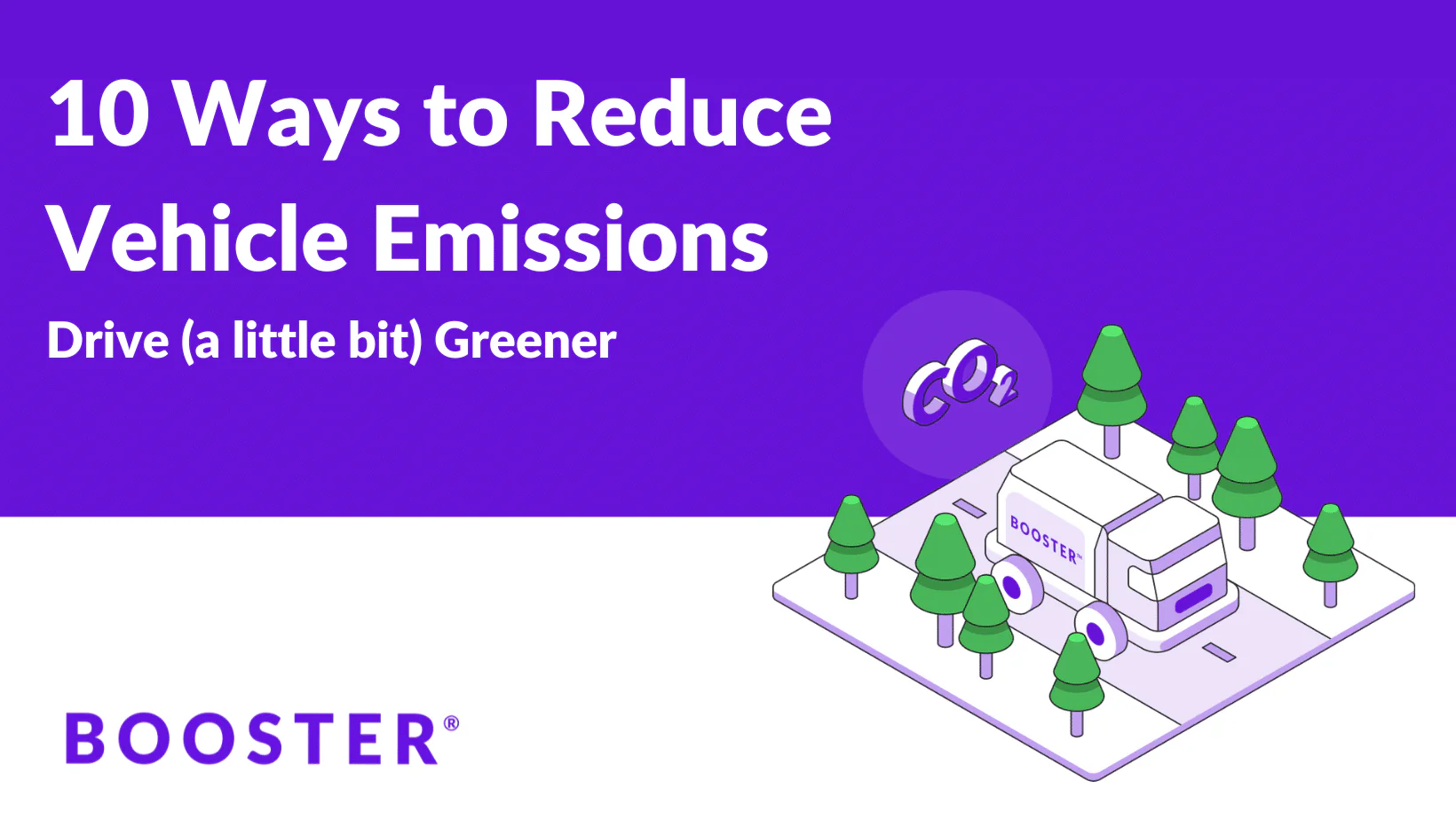Reducing vehicle emissions has a few different benefits including enhancing your car’s performance, increasing fuel efficiency, higher cost savings, and positive impacts to the environment. Many states have regulations that require vehicles to meet emissions requirements in an effort to reduce overall emissions on the planet. There are also actions that each individual person can take to drive more sustainability and reduce your impact to the environment. This article will review 10 practical tips to help.
Why Is It Necessary To Reduce Vehicle Emissions
Before we dive into the 10 tips to help reduce emissions, let’s spend some time discussing why it’s important. Reducing vehicle emissions is crucial in our efforts to combat climate change and improve air quality. Vehicles, particularly those powered by fossil fuels, are a significant source of greenhouse gas emissions and air pollutants. One of the main global sources of greenhouse gas emissions is transportation. Vehicle emissions contribute to air pollution which has detrimental effects on plant, animal, and human health.
Choosing to reduce your personal emissions can help to lessen our carbon footprint, and make our cities healthier places to live.
How You Can Reduce Vehicle Emissions?
1. Use A Cleaning Agent
Over time, harmful deposits can accumulate in your car’s engine, reducing its efficiency and increasing emissions. Adding a cleaning agent to your fuel system helps remove these deposits and lowers emissions. Consider using premium fuel that already contains additives to improve fuel efficiency and reduce emissions. Using an exhaust and fuel cleaner every three months helps maintain optimal efficiency.
2. Opt For Better Fuel
Premium fuels, often labeled as ‘premium,’ ‘super,’ or ‘ultimate,’ contain active cleaning agents that remove dirt from the engine. Using these fuels can improve fuel efficiency, reduce emissions, and potentially enhance your car’s performance. Experiment by filling up with premium fuel a few times to see if you notice any difference.
3. Change The Oil
Regularly changing your car’s engine oil is vital for optimal efficiency. Refer to your vehicle’s handbook for recommended service intervals and ensure you check the oil level regularly between services. Using the correct grade of oil is crucial for maintaining your car’s efficiency.
4. Change The Air Filter
A clogged air filter restricts airflow to the engine, leading to various issues and premature wear and tear. Check the recommended service intervals for air filter replacement, and consider changing it more frequently if you live in a dusty environment.
5. Check Your Tire Pressure
Regularly checking your tire pressure is essential. Low tire pressure increases fuel consumption and CO2 emissions. Underinflated tires by 20% reduce fuel economy by around 20%. Follow the manufacturer’s recommendations for tire pressures and choose tires with low rolling resistance to further reduce fuel consumption.
6. Manage Your Air Conditioning System
Using the air conditioning system puts additional strain on the engine, increasing emissions. Consider turning off the air conditioning a few miles before reaching your destination, as the system will continue to circulate cool air. Use the air conditioning system at least once a week to prevent expensive repairs. However, it may be more fuel-efficient to use the vehicle’s climate control system rather than driving with the windows down, as open windows create drag, increasing fuel consumption and emissions.
7. Reduce Idle Time
Minimize the time spent idling by turning off the engine when parked or stuck in traffic for more than 10 seconds. Contrary to popular belief, idling for 10 seconds wastes more fuel than restarting the engine. If your car is equipped with a stop-start system, make sure it is activated. Avoiding unnecessary idling helps reduce emissions and contributes to cleaner air quality.
8. Change Your Driving Style
Making small changes to your driving style can have a significant impact on emissions. Shift gears earlier, avoid reaching high RPMs, brake sooner, and maintain a moderate speed to reduce wear and tear while maximizing efficiency. Some vehicles provide driving style feedback through the dashboard information display.
9. Avoid Unnecessary Driving
Consider alternative options to reduce unnecessary driving. Combine multiple trips into one, walk or cycle for shorter distances, or explore car-sharing schemes. The less time spent behind the wheel, the fewer emissions your vehicle will produce.
10. Maintain Aerodynamic Efficiency
Remove any unnecessary accessories like roof racks, bike carriers, or roof boxes when not in use. These items create resistance and increase drag, leading to higher emissions. By maintaining your vehicle’s aerodynamic efficiency, you can reduce fuel consumption and emissions.
Bottom Line
By implementing these 10 effective strategies, you can reduce your vehicle’s emissions. Utilizing cleaning agents, choosing better fuels, performing regular maintenance, and adopting fuel-efficient driving habits will not only benefit the environment but also enhance your car’s performance and fuel economy. Remember, even small changes can make a big difference in reducing emissions and contributing to a cleaner and greener future.
